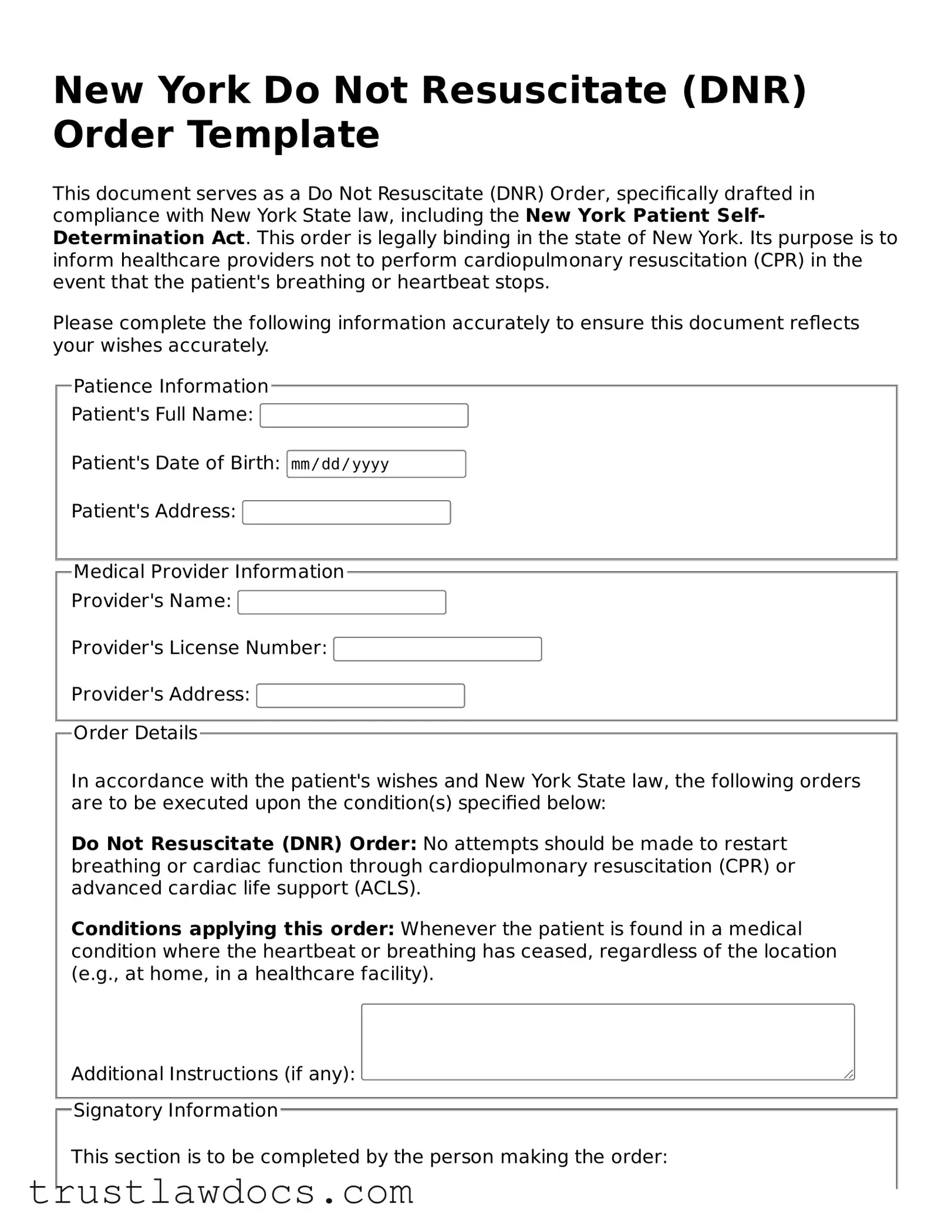Completing a New York Do Not Resuscitate (DNR) Order form is a significant step for individuals who wish to make their healthcare wishes known in advance. However, numerous mistakes can undermine the intent of this important document. Awareness is key to avoiding these common errors to ensure that one's healthcare preferences are clearly understood and respected.
One common mistake is neglecting to have the form filled out accurately and completely. Every field in the DNR form serves a purpose, providing crucial information to healthcare providers. Missing details can lead to confusion or delay when the document is needed most. Similarly, incorrect patient information, such as a misspelled name or wrong date of birth, might lead to questions about the form's validity, potentially causing unwanted medical interventions.
Another frequent oversight is failing to have the form properly witnessed as required by New York law. The presence of a witness adds a layer of legal authenticity, affirming that the individual's decision regarding resuscitation was made voluntarily and without coercion. Without proper witnessing, the document's enforceability can be compromised.
Additionally, many forget to discuss their DNR orders with their family, loved ones, or designated healthcare proxy. This conversation is crucial, as it prepares others for the individual's wishes, reducing the possibility of disputes or surprises in emergency situations. Clear communication ensures that everyone involved understands the person's desires, facilitating their execution.
Moreover, not updating the DNR order to reflect current wishes or medical conditions is a significant misstep. As circumstances change, what one desires in terms of medical intervention might also change. Regularly reviewing and updating the DNR order ensures that it accurately reflects one's current healthcare preferences.
Equally important is the mistake of improperly storing the DNR order. For this document to be effective, it must be readily accessible to healthcare providers in an emergency. Storing the DNR form where it cannot be easily found, such as in a safe deposit box, defeats its purpose.
Ignoring state-specific requirements forms another critical error. Each state has its laws regarding DNR orders, and New York is no exception. It's essential to ensure that the DNR order complies with New York's specific legal requirements to be legally binding.
Lastly, many individuals mistakenly believe that a DNR order is all that is needed for an advance directive. However, a comprehensive approach to end-of-life planning often involves more than just a DNR order. Other documents, such as a living will or healthcare proxy form, should also be considered to fully articulate one's wishes regarding medical treatment.
Understanding and avoiding these mistakes can go a long way in ensuring that a DNR order effectively communicates one's wishes, offering peace of mind to both the individual and their loved ones. With careful attention to detail and compliance with New York State laws, individuals can ensure their healthcare preferences are honored.
